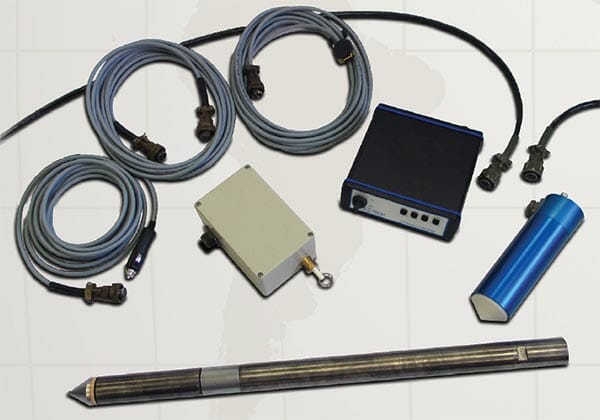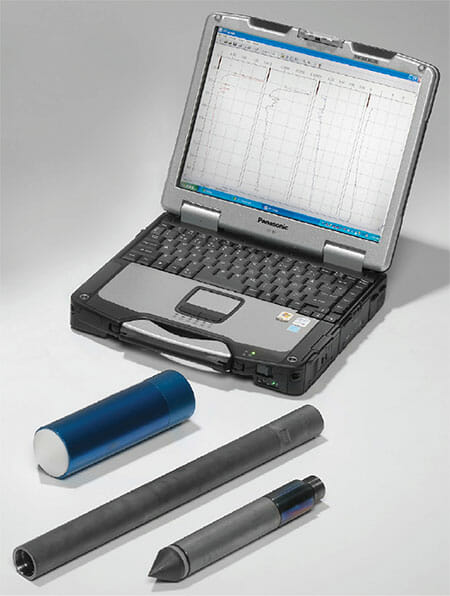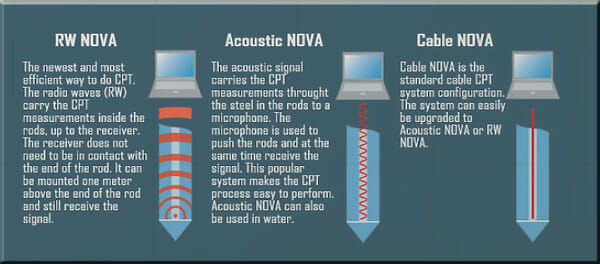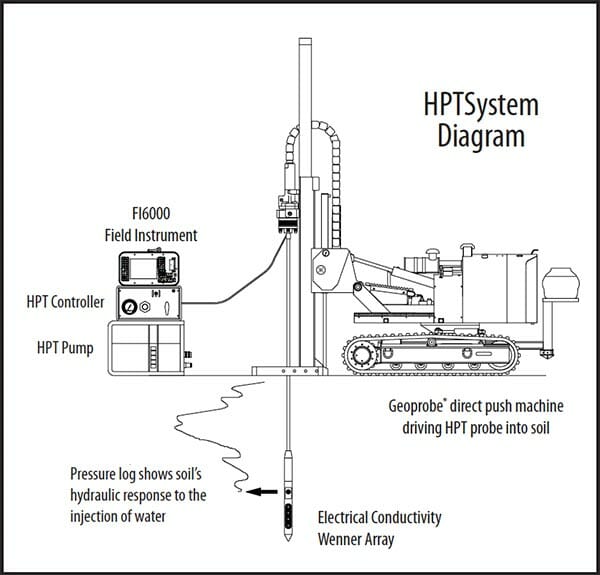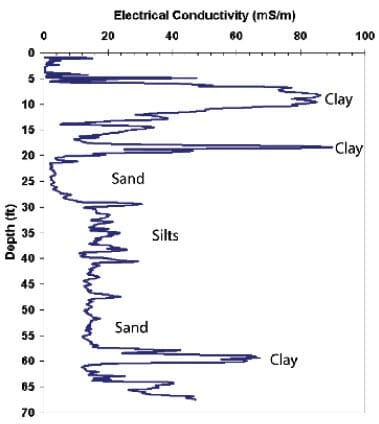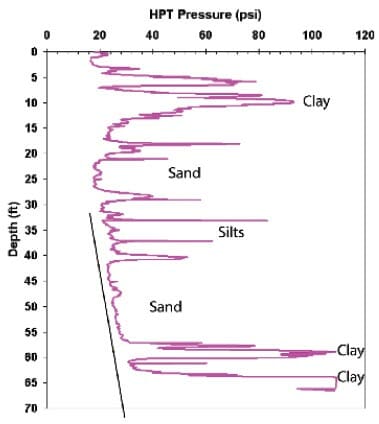CONE PENETRATION TESTING
(CPT)
GEOPROBE 2060 CPT
20-ton cabin crawler for CPT, MIP, HPT
- Equipped with a proven Geoprobe 142HP engine and hydraulic system that provided excellent climbing and turning ability
- The robust track system of the 142-horsepower allows for CPT drilling in most terrains. It’s proven drive-train and chassis provide excellent climbing and turning ability
- 20-tons of downforce, 30-tons of pull and 7 psi ground pressure
- Undercarriage camera and climate controlled cabin
- Four hydraulic outriggers and an auxiliary bottom clamp to secure the tool string with the push clamp is released
- Controls that make jobs in the field quick, efficient and comfortable
COne Penetration testing (CPT)
CPT drilling determines subsurface stratigraphy, and estimates geotechnical parameters and materials present
- Used by geotechnical engineers to determine construction requirements for infrastructure, roadbeds, bridges, and buildings
- Common measurements being collected are cone tip pressure, sleeve friction, pore pressure, tilt angle – Seismic measurements also possible
- Independently gauged geotech AB cones deliver high resolutions digital data
- Utilizes the in-situ measurement: measures soil properties in the right environment; in the soil as it is, where it is
- Real-time, repeatable and on-site interpretation of soil logs can be used to better identify the soil type, water table and soil parameters for engineering design ultimately saving project costs
- Faster production rates when compared to conventional drilling and sampling result in a most cost-effective operations
Membrane interface probe (MIP) (MIPHPT)
Log the relative concentration of volatile organic compounds with depth of soil
- MIP is a logging tool that measures hydrocarbon and solvent contamination along with soil electrical conductance and permeability
- An inert carrier gas is continually swept behind a heated membrane in the probe, delivering it to a series of detectors at the surface. The detectors each respond to different analyte properties which allows the MIP operator to discern the contaminant to its family group as well as provide the ability to map out the contaminant plume from source to extent
- Shows distribution and relative magnitude of both halogenated and non-halogenated VOC contaminants
- Works in both saturated and unsaturated soils. Detects contaminates in both coarse and fine grained soils
- Real time contaminant screening information is generated, allowing field adjustment of the site investigation
Hydraulic profiling Tool (HPT)
FEATURES
- Real-time profiling of soil hydraulic properties
- Use in fine and coarse grain material
- Use in saturated and unsaturated conditions
- Built to withstand percussion driving
- Provides a simultaneous log of electrical conductivity (EC)
- Transducer measures pressure response of soil to injection of water
- Data is stored on the field instrument for future analysis
BENEFITS
- Select well screen intervals
- Establish hydraulic conductivity of groundwater on site
- Measure static groundwater elevations across the site
- Target zones for injection of remediation material
- Evaluate properties of unconsolidated materials
- Examine the electrical conductivity of so

